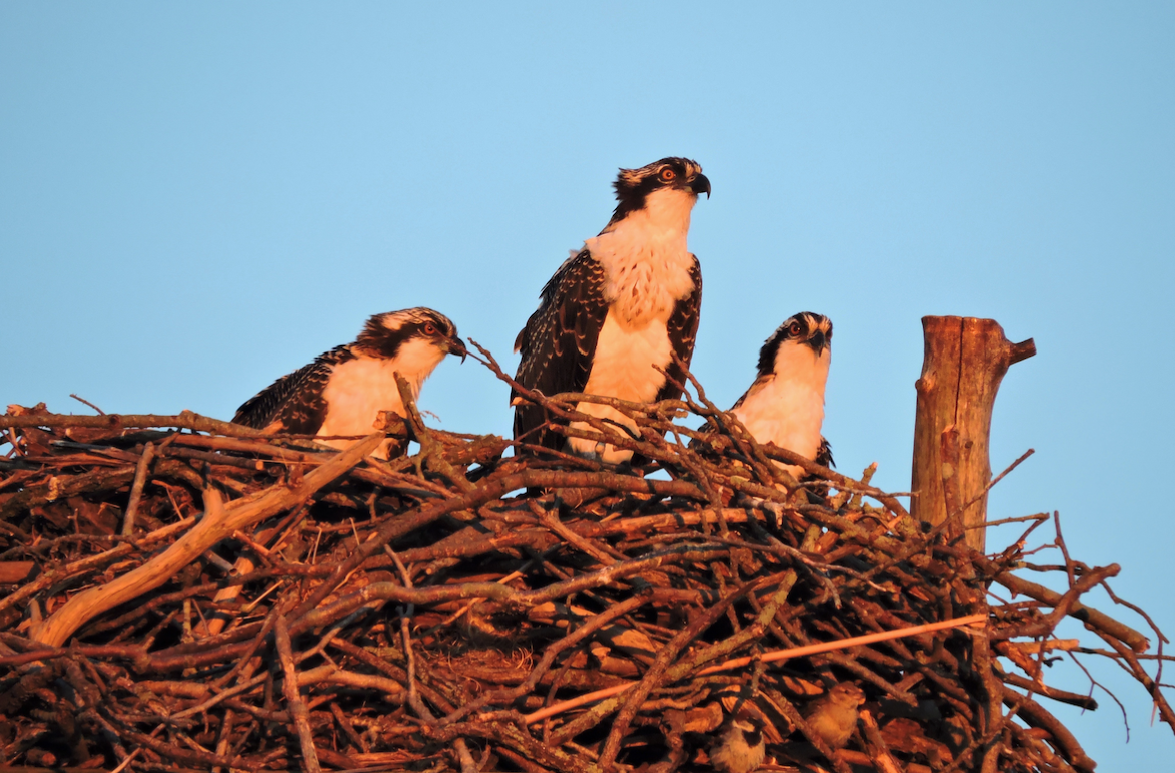
SO LONG STYROFOAM
Maryland has become the first state to ban Styrofoam food and drink containers. Half of Maryland residents currently live in areas where the polystyrene is banned, but in mid-March, the House of Delegates made it official, banning the containers statewide. There will be a one-year period to phase out the material, but after that, violators will have to pay a $250 fine. In Baltimore, the city’s various trash wheels have collected more than 1 million foam containers since they began cleaning waterways in 2014.
THE BIRDS ARE BACK
In mid-March, birdwatchers along the Chesapeake Bay started to notice the reemergence of one of our state’s more surefire signs of spring: the osprey. The watershed is home to the largest breeding population of these birds of prey, who return to the local waterways each year to hunt and nest. Meanwhile, in Baltimore, on the first day of spring, the city’s famed peregrine falcon couple, Boh and Barb, laid their first egg of the year atop the Legg Mason building in Harbor East. They fledged four baby hawks last year.
STRIPED BASS BLUES
According to a new stock assessment released in February, the state’s famed striped bass are in trouble and overfished. Rockfish have had somewhat of a rocky history here in Maryland, with overharvesting in the 1980s leading to a nearly six-year, zero-catch moratorium. The populations rebounded in the late ’90s, only to decline again. Recent restrictions have not had a large enough impact on the populations, and some experts expect that this new assessment will lead to more reductions.
R.I.P. HARRY HUGHES
Harry Hughes, the 57th governor of Maryland and a pioneer of Chesapeake Bay cleanup efforts, passed away earlier this month at the age of 92. Across two terms, from 1979 to 1987, Hughes would become one of the bay’s greatest champions. The Eastern Shore native initiated the multi-state-federal partnership that is the Chesapeake Bay Agreement, which continues to improve the health of our nation’s largest estuary. He cut back on pollutants, limited shoreline development, and also imposed the aforementioned moratorium on striped bass. Governor Larry Hogan called him “alongtime friend and Maryland legend whom I deeply admired.” Flags were flown at half-mast in his honor.
FUNDING IN FLUX
Meanwhile, it’s starting to feel like Groundhog’s Day again with the Trump administration once again calling for federal funding cuts for Chesapeake Bay cleanup efforts. For the third year in a row, budget cuts have been proposed to the Chesapeake Bay Program, which coordinates the partnership between multiple federal agencies and watershed states to monitor, assess, and improve the bay’s health. Like last year, the 2020 budget, released in mid-March, would reduce Environmental Protection Agency funding for the program by 90 percent, from $73 million to $7.3 million, providing no explanation. Governor Hogan has asked Congress to not only block the reduction but increase bay funding by $90 million.
RAMPING UP RENEWABLE ENERGY
Last week, the Maryland Senate approved legislation that would greatly increase the state’s renewable energy requirements. The Clean Jobs Act would require that half of the state’s electricity come from renewable sources such as solar and wind by 2030, while also increasing related jobs. The current statewide goal for renewable energy is 25 percent by 2020. In 2017, renewable energy accounted for 10 percent of Maryland’s total net electricity generation. However, after similar legislation failed in the House, it is unclear whether or not the bill will be approved in its next phase.
LIVESTREAM SEWAGE
Last week, after heavy rains, more than 22 million gallons of sewage-tainted water flowed into the Jones Falls and Herring Run. Just days before, the Baltimore City Department of Public Works announced the launch of a new live map of sewage pollution. Going forward, the DPW will issue public alerts when overflows reach or exceed 10,000 gallons to abide by state and federal environmental regulations.
